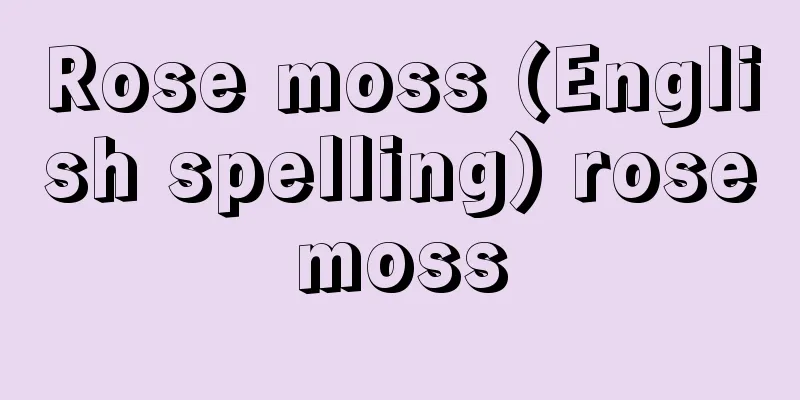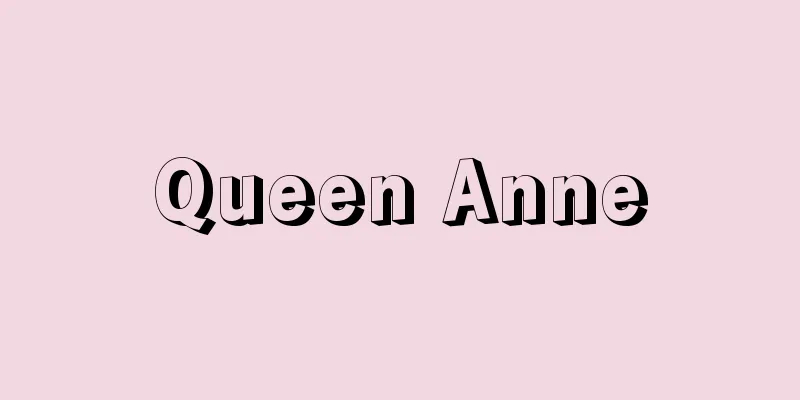Summer Festival - Natsumatsuri

|
This festival is held in the summer, and the date varies from region to region. Unlike the spring and autumn festivals, it has undergone a major change from its original form. Originally, this time of year was a time for events to ward off disasters. In particular, for rice farming, in addition to the risk of insect damage and wind damage, water was a major concern, and many areas held festivals for the water god at this time of year. The Gion faith, which is said to worship Gozu Tenno, began to be held as a summer festival throughout the country in the early modern period, and as a result, summer festivals have changed into urban-style festivals. In "Kiyu Shoran," it is said that "The festivals of Sakurada-sanno and Kanda Myojin in Edo are magnificent," and from the Genroku period (1688-1704), the Kanda Myojin Festival began to be viewed by the shogun. Also, floats and parades of umbrella poles came to be held, attracting large numbers of spectators, but during the Kyoho period (1716-36), extravagant festivals were temporarily banned. The Gion Festival at Yasaka Shrine in Kyoto, which could be called the original Gion Festival, was originally held from the 7th to the 14th of the 6th month of the lunar calendar, but is now held from the 17th to the 24th of July. However, if events before and after are included, it takes up the whole of July. A well-known festival of the same genre as Gion is the Tsushima Festival in Tsushima City, Aichi Prefecture, called the Tenno Festival, which is held on the fourth Saturday of July and the following Sunday. There is a portable shrine procession on the Tenno River, and at night five danjiri boats decorated with lanterns are taken out. On the 16th, a Shinto ritual called Miyoshi Nagashi, which is held late at night to ward off bad luck, is held. In rural areas of Iwate Prefecture, the god of agriculture has long been worshiped on June 15th of the lunar calendar, when a straw horse is made to ward off evil spirits, but now many places claim to worship Gozu Tenno instead. In the coastal areas of Rikuzen, the Hikifune Festival is also held on June 15th. It is said to be a prayer for safety at sea and a good catch. In Kitashitara County, Aichi Prefecture, early in the morning of the Gion Festival on June 15th, unsalted rice dumplings are wrapped in wheat stalk bags and offered to the village gods. On the following day, the 16th, it is taboo to go to the river. On Iki Island in Nagasaki Prefecture, a saying goes "Gion three days, Imi three days," and people do not go into the sea during the three days of the Gion Festival. In Abu District, Yamaguchi Prefecture, June 15th is called Cow Gion, and cows are led to the water's edge and washed. It is said in various regions that Gion parishioners do not eat cucumbers. [Oto Tokihiko] The Tsushima Shrine festival, Tenno Festival, is held every year on the fourth Saturday of July and the following Sunday. It is also called the Paper Lantern Festival, and a boat decorated with 365 paper lanterns in a hemispherical shape crosses the Tenno River while playing Tsushima music, and travels to the shrine. Nationally designated Important Intangible Folk Cultural Property Tsushima City, Aichi Prefecture © Tsushima Shrine "> Owari Tsushima Tenno Festival (Evening Festival) Source: Shogakukan Encyclopedia Nipponica About Encyclopedia Nipponica Information | Legend |
|
夏に行われる祭りで、期日は地方によってまちまちである。春秋の祭りと違い、本来の姿から大きな変化をきたしている。もともとこの時期は災厄を除去する行事の行われるときであった。とくに稲作にとって虫害や風害のおそれのほかに、水の心配がなにより大事(おおごと)で、この時分、水神の祭りをする土地が多くみられた。牛頭天王(ごずてんのう)を祀(まつ)ったという祇園(ぎおん)信仰が、近世以降全国にわたって夏祭として行われるようになり、その結果、夏祭が都会風の祭礼に変化してきた。『嬉遊笑覧(きゆうしょうらん)』には「江戸の桜田山王、神田明神の御祭礼壮麗なり」とされ、元禄(げんろく)期(1688~1704)より神田明神祭には将軍の上覧があるようになった。また屋台や傘鉾(かさほこ)の練物(ねりもの)が出て多人数の見物人が集まるようになったが、享保(きょうほう)期(1716~36)に一時あまり豪華な祭礼は禁止されたとある。祇園祭の本家ともいうべき京都の八坂(やさか)神社の祇園祭は、もと旧暦6月7日から14日に及んで行われたが、現代は7月17日から24日までに行われている。しかし前後の行事を入れると7月いっぱいかかっている。祇園と同じ系統の祭りでよく知られているのは、愛知県津島市の津島祭で、天王祭とよばれ、7月第4土曜日とその翌日の日曜日に行われている。天王川に神輿渡御(しんよとぎょ)があり、夜提灯(ちょうちん)をつけた車楽船(だんじりぶね)が五艘(そう)出る。16日には神葭(みよし)流しという厄(やく)送りの神事が深夜行われる。 岩手県下の農村では、旧暦6月15日に古くより農神を祀り厄除(やくよ)けとして藁馬(わらうま)をつくって神送りしたが、いまでは牛頭天王を祀ると称している所が多い。陸中の海岸地帯ではやはり6月15日に曳船(ひきふね)祭を行っている。海上安全と豊漁を祈るという。愛知県北設楽(きたしたら)郡では6月15日の祇園祭の早朝、小麦稈(かん)でこしらえた包(ほう)に塩なしの米団子を包んで村内の神々に供える。翌16日は川へ行くことを忌む。長崎県壱岐(いき)島では「祇園三日、イミ三日」といって祇園祭の3日間は海へ入らない。山口県阿武(あぶ)郡では6月15日を牛の祇園といって牛を水辺に引いて行き洗ってやる。祇園の氏子はキュウリを食べないと諸地方でいわれている。 [大藤時彦] 毎年7月の第4土曜日とその翌日の日曜日に行われる津島神社の祭礼、天王祭の宵祭。提灯祭ともいわれ、半球状に365個の提灯を飾った車楽船が津島楽を奏しながら天王川を渡り、御旅所に神幸する。国指定重要無形民俗文化財 愛知県津島市©津島神社"> 尾張津島天王祭(宵祭) 出典 小学館 日本大百科全書(ニッポニカ)日本大百科全書(ニッポニカ)について 情報 | 凡例 |
<<: Summer Festival Naniwa Kagami - Natsumatsuri Naniwa Kagami
>>: Natsufuji (summer wisteria) - Millettia japonica
Recommend
Limitanei (English spelling)
The border defense forces deployed by the Roman Em...
Leather hand - Kawate
…These Imperial estates were inherited as manor g...
Tachibana family Tachibana no Suke
A musician at a vaudeville theater and head of th...
Akita Domain
A clan that controlled the six districts of Akita...
Hong Gyeong-rae's Rebellion
A popular uprising in 1812 at the end of the Yi Dy...
Zero - Zero (English spelling)
The number 0, which means that nothing exists. In...
The Five Kings of Wa
Five kings of Wa in the 5th century whose names a...
Guo Anhing
…Construction began in 516 (Xiping 1) and was com...
Carlos III
1716‐88 The eldest son of Philip V and Isabella of...
Amada River
…The main river has a length of 146 km and a tota...
Tobacco mosaic virus
Abbreviated as TMV. It is the causative agent of ...
Illustrated biography of the saint Honen
It tells the story of the life of Honen (Genku), ...
Akpata - Akpata
...There are no special arrangements other than t...
Katsura Taro
A Meiji era soldier and politician. Born November...
Skytia
…the Scythians were a nomadic horse-riding people...









